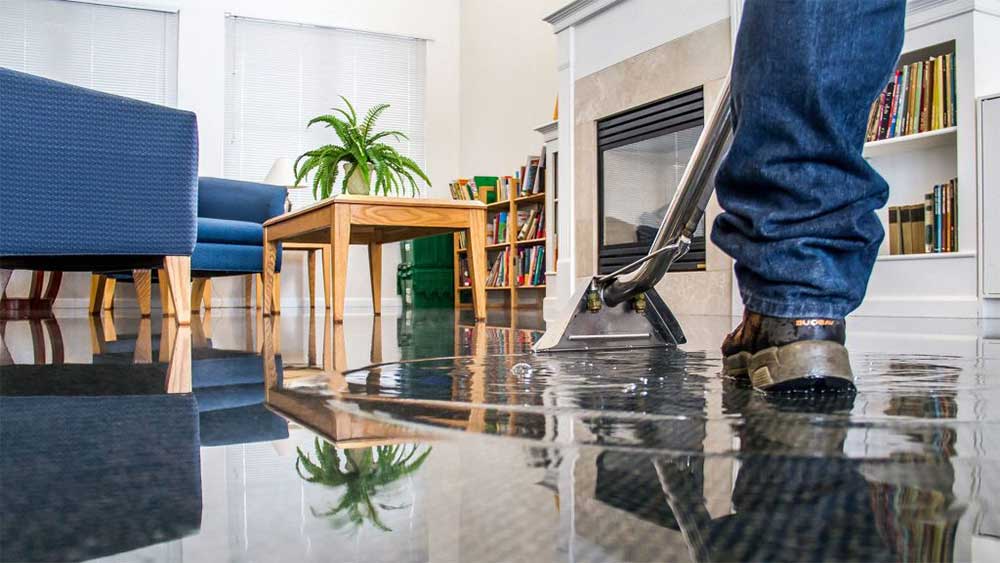Do's & Don'ts of Water Restoration.
Do's & Don'ts of Water Restoration.
Blog Article
This post listed below about Keeping Your Home Safe This Holiday Season is seriously entertaining. Give it a go and draw your own findings.

Water gives life, water invasion on components where it's not intended to be can result in damage. Houses with water damages scent moldy as well as old.
Water can originate from several sources such as hurricanes, floodings, ruptured pipelines, leakages, and also sewage system issues. In case you experience water damage, it would be good to know some security preventative measures. Below are a couple of standards on just how to manage water damage.
Do Prioritize Home Insurance Coverage
Water damage from flood dues to heavy winds is seasonal. You can also experience a sudden flood when a damaged pipeline instantly breaks right into your house. It would be best to have home insurance that covers both disasters such as all-natural catastrophes, as well as emergencies like broken plumbing.
Don't Forget to Turn Off Energies
This reduces off power to your whole residence, protecting against electrical shocks when water comes in as it is a conductor. Do not forget to turn off the primary water line valve.
Do Keep Proactive and Heed Climate Informs
Listen to discharge cautions if you live near a river, creek, or lake . Doing so reduces potential residential property damages.
Do Not Neglect the Roofing System
Before the weather condition transforms shocking, ensure you have a roof examination. It would be prudent to obtain this solution annually as it can reduce complicated problems. You can prevent rain damage if there are no holes and leaks in your roofing system. Your contractor will certainly additionally deal with malfunctioning rain gutters or any other indications of weakening. This will avoid water from flowing down your wall surfaces and also saturating your ceiling.
Do Take Note Of Small Leaks
A burst pipeline doesn't happen over night. Generally, there are red flags that indicate you have actually deteriorated pipes in your home. You might discover gurgling paint, peeling off wallpaper, water streaks, water discolorations, or dripping sounds behind the walls. At some point, this pipeline will certainly rupture. Ideally, you need to not wait for things to intensify. Have your plumbing repaired before it results in enormous damages.
Don't Panic in Case of a Ruptured Pipeline
When it comes to water damage, timing is crucial. Hence, if a pipeline ruptureds in your residence, instantly shut off your primary water valve to reduce off the resource. Call a credible water damages remediation professional for aid.
Water offers life, water intrusion on parts where it's not supposed to be can result in damage. Homes with water damage smell old and musty.
Water damage from flood fees to heavy winds is seasonal. You may discover bubbling paint, peeling wallpaper, water touches, water discolorations, or trickling audios behind the wall surfaces. When it comes to water damage, timing is essential.
Some Do's & Don't When Dealing with a Water Damage
DO:
Make sure the water source has been eliminated. Contact a plumber if needed. Turn off circuit breakers supplying electricity to wet areas and unplug any electronics that are on wet carpet or surfaces Remove small furniture items Remove as much excess water as possible by mopping or blotting; Use WHITE towels to blot wet carpeting Wipe water from wooden furniture after removing anything on it Remove and prop up wet upholstery cushions for even drying (check for any bleeding) Pin up curtains or furniture skirts if needed Place aluminum foil, saucers or wood blocks between furniture legs and wet carpet Turn on air conditioning for maximum drying in winter and open windows in the summer Open any drawers and cabinets affected for complete drying but do not force them open Remove any valuable art objects or paintings to a safe, dry place Open any suitcases or luggage that may have been affected to dry, preferably in sunlight Hang any fur or leather goods to dry at room temperature Punch small holes in sagging ceilings to relieve trapped water (don't forget to place pans beneath!); however, if the ceiling is sagging extremely low, stay out of the room and we'll take care of it DO NOT:
Leave wet fabrics in place; dry them as soon as possible Leave books, magazines or any other colored items on wet carpets or floor Use your household vacuum to remove water Use TV's or other electronics/appliances while standing on wet carpets or floors; especially not on wet concrete floors Turn on ceiling fixtures if the ceiling is wet Turn your heat up, unless instructed otherwise

Hopefully you enjoyed reading our part about Fire And Water Damage Prevention. Thank you so much for taking the time to read our short article. Are you aware of another individual who is excited by Preventing Fires and Water Damage In Your Home? Take a moment to promote it. I am grateful for your time. Visit us again soon.
Report this page